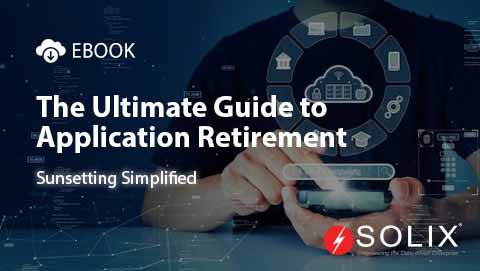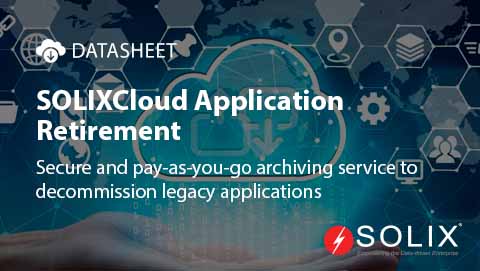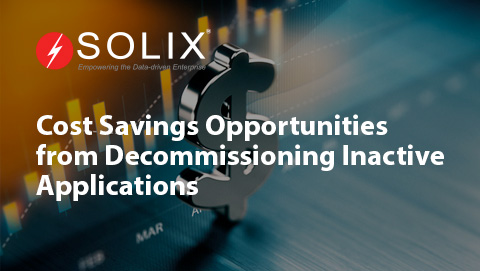
Application Retirement Integration
When organizations decide to phase out obsolete applications, one of the first questions that come to mind is how do we integrate application retirement seamlessly into our existing systems Application retirement integration is the process of transitioning from legacy systems while ensuring that essential data is preserved, compliance is maintained, and business continuity is not compromised. Its a critical move for any growth-oriented business that aims to leverage modern technology without losing crucial operational history.
As someone who has navigated the maze of retiring applications, I can tell you that understanding application retirement integration is vital. It goes far beyond just shutting down an application; it requires a strategic approach to data management and operational efficiency. Whether youre a small business or a large corporation, knowing how to handle these transitions can save you a lot of headaches down the line.
Understanding the Importance
Before we delve deeper into application retirement integration, its essential to understand its importance. Legacy applications often accumulate technical debt, slow down business processes, and can even pose security risks. If managed poorly, retiring an application can lead to lost data and disrupted services. Thats where effective integration strategies come into play. They ensure that decommissioned apps do not leave behind gaps in critical business intelligence or compliance issues.
Many companies, including Solix, offer solutions designed specifically to assist in this process. They help organizations smoothly transition away from outdated applications while maintaining the integrity of their data. If youre looking for a streamlined approach to managing your application lifecycle, exploring options such as the Enterprise Data Archive can significantly simplify this journey.
Key Steps in Application Retirement Integration
So, what are the practical steps you should consider while undergoing application retirement integration Heres a structured approach
1. Assess Your Applications
The first step is to evaluate which applications are in need of retirement. This usually involves reviewing performance metrics, usage statistics, and user feedback. By understanding how each application contributes to your organization, you can make informed decisions on which systems to retire.
2. Identify Business Processes Impacted
Next, map out the business processes that rely on these applications. Understanding the relationships between different systems will help you identify critical data points that must be retained and any potential disruptions that might occur. This is where the expertise of IT consultants can come in handy, as well as tools offered by companies like Solix.
3. Data Migration Planning
Once youve identified the applications and their associated processes, the next step is planning data migration. This can be a complex task, as it often involves transferring data to a new system while ensuring that it remains accessible and secure. Documenting every step of the migration process is essential for retaining data integrity.
4. Compliance and Security Check
Compliance is a significant concern in application retirement. Different industries are governed by specific regulations regarding data retention. Its crucial to ensure that any strategy you pursue aligns with these regulations. Engaging a reliable partner can prove beneficial during this phase, ensuring that legal considerations are acknowledged during the data migration process.
5. Execute the Retirement Plan
Once youve planned the transition, its time to put your strategy into action. Make sure to communicate changes to your team. Clear communication will help alleviate any concerns regarding job functions or data access during the transition phase. Keep in mind that issues may arise during execution, so its essential to remain flexible and adapt as necessary.
6. Post-Retirement Review
After execution, conduct a post-retirement review. It involves assessing how well your retirement plan went, what went right, and what could be improved in future transitions. This feedback loop is crucial for refining your application retirement integration strategy for subsequent efforts.
Real-World Scenario
In my experience, I once worked with a mid-sized company that was relying on a legacy application that was slow, cumbersome, and increasingly problematic. After assessing their systems, we identified specific business processes hampered by this outdated app. With Solix Enterprise Data Archive solution, we managed to migrate their essential data securely, ensuring compliance was maintained throughout the process.
It was not only the technical execution that was important; the communication strategy we developed helped the staff feel comfortable with the changes. Post-retirement, feedback highlighted how much smoother operations had become, proving that the initial discomfort of transitioning was entirely worth it.
Actionable Recommendations
Based on my experiences, here are some actionable recommendations for anyone facing application retirement integration
- Engage cross-departmental teams during the assessment phase to make your evaluations more robust.
- Leverage external expertise when possible. Bringing in specialists can uncover challenges you might not foresee.
- Utilize modern archiving solutions that keep data secure while still accessible.
- Regularly review and update your integration plans as new technologies emerge.
- Encourage your team to share their experiences and lessons learned after a transition.
Contact Solix for Customized Solutions
If you find yourself facing the daunting task of application retirement integration, dont hesitate to reach out to Solix. Their tailored solutions can help you navigate through the challenges effortlessly. You can call them at 1.888.GO.SOLIX (1-888-467-6549) or connect through their contact page
Author Bio
Hi, Im Jake, a tech enthusiast passionate about application retirement integration. My journey through various IT challenges has armed me with insights that I love sharing with others. My goal is to empower businesses to transition smoothly and innovate without the weight of outdated systems holding them back.
Disclaimer
The views expressed in this blog are my own and do not reflect the official position of Solix. Always consult with a professional before making significant changes to your IT system.
Sign up now on the right for a chance to WIN $100 today! Our giveaway ends soon‚ dont miss out! Limited time offer! Enter on right to claim your $100 reward before its too late!
DISCLAIMER: THE CONTENT, VIEWS, AND OPINIONS EXPRESSED IN THIS BLOG ARE SOLELY THOSE OF THE AUTHOR(S) AND DO NOT REFLECT THE OFFICIAL POLICY OR POSITION OF SOLIX TECHNOLOGIES, INC., ITS AFFILIATES, OR PARTNERS. THIS BLOG IS OPERATED INDEPENDENTLY AND IS NOT REVIEWED OR ENDORSED BY SOLIX TECHNOLOGIES, INC. IN AN OFFICIAL CAPACITY. ALL THIRD-PARTY TRADEMARKS, LOGOS, AND COPYRIGHTED MATERIALS REFERENCED HEREIN ARE THE PROPERTY OF THEIR RESPECTIVE OWNERS. ANY USE IS STRICTLY FOR IDENTIFICATION, COMMENTARY, OR EDUCATIONAL PURPOSES UNDER THE DOCTRINE OF FAIR USE (U.S. COPYRIGHT ACT § 107 AND INTERNATIONAL EQUIVALENTS). NO SPONSORSHIP, ENDORSEMENT, OR AFFILIATION WITH SOLIX TECHNOLOGIES, INC. IS IMPLIED. CONTENT IS PROVIDED "AS-IS" WITHOUT WARRANTIES OF ACCURACY, COMPLETENESS, OR FITNESS FOR ANY PURPOSE. SOLIX TECHNOLOGIES, INC. DISCLAIMS ALL LIABILITY FOR ACTIONS TAKEN BASED ON THIS MATERIAL. READERS ASSUME FULL RESPONSIBILITY FOR THEIR USE OF THIS INFORMATION. SOLIX RESPECTS INTELLECTUAL PROPERTY RIGHTS. TO SUBMIT A DMCA TAKEDOWN REQUEST, EMAIL INFO@SOLIX.COM WITH: (1) IDENTIFICATION OF THE WORK, (2) THE INFRINGING MATERIAL’S URL, (3) YOUR CONTACT DETAILS, AND (4) A STATEMENT OF GOOD FAITH. VALID CLAIMS WILL RECEIVE PROMPT ATTENTION. BY ACCESSING THIS BLOG, YOU AGREE TO THIS DISCLAIMER AND OUR TERMS OF USE. THIS AGREEMENT IS GOVERNED BY THE LAWS OF CALIFORNIA.
-
-
-
White Paper
Cost Savings Opportunities from Decommissioning Inactive Applications
Download White Paper -




